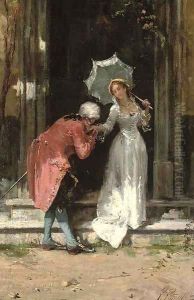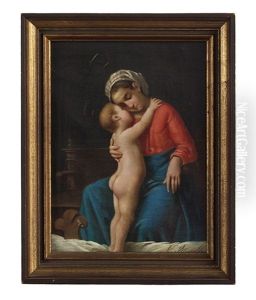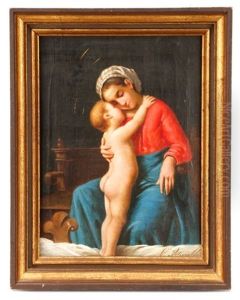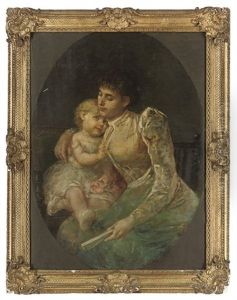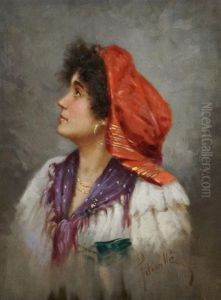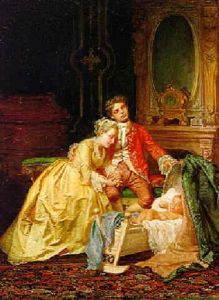Vincenzo Pasquale Angelo Petrocelli Paintings
Vincenzo Pasquale Angelo Petrocelli was an Italian-American artist born in 1880 in the town of Montefalcione, in the province of Avellino, Italy. His early life in Italy shaped his artistic outlook, embedding in him a deep appreciation for the Italian Renaissance and Baroque traditions. Despite the lack of detailed records about his early education in art, it's evident that Petrocelli was deeply influenced by the rich cultural and artistic heritage of his homeland. In search of broader horizons and the vibrant immigrant communities' opportunities, Petrocelli immigrated to the United States, where he became part of the flourishing Italian-American artistic community.
Petrocelli's work is characterized by its versatility, spanning from traditional portraits and landscapes to more elaborate religious and historical compositions. His ability to blend the classical Italian tradition with the emerging American tastes made his work particularly appealing to a wide range of patrons. During his relatively brief career, he managed to secure commissions from both private clients and public institutions, which testified to his skill and adaptability as an artist.
Despite his promising career, Vincenzo Pasquale Angelo Petrocelli's life was cut short by the 1918 influenza pandemic, which claimed his life at the age of 38. His death marked a significant loss to the Italian-American art community, which had seen in him a burgeoning talent capable of bridging Italian artistic traditions with American sensibilities. Today, Petrocelli's works are remembered for their technical proficiency, emotional depth, and cultural synthesis, offering invaluable insights into the immigrant experience and the transatlantic exchange of artistic ideas during the early 20th century.
